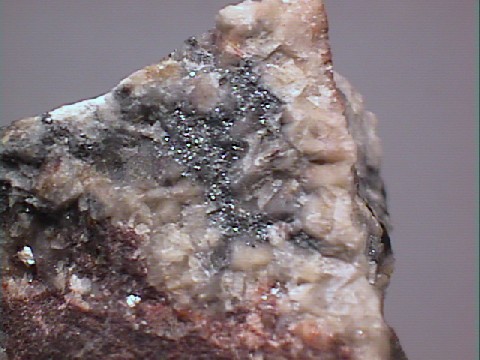 THE
MINERAL CLAUSTHALITE
THE
MINERAL CLAUSTHALITE
- Chemistry: PbSe, Lead Selenide
- Class: Sulfides
- Subclass: Selenides
- Group: Galena
- Uses: As a very minor ore of lead and selenium and as mineral specimens.
Specimens
Clausthalite and the mineral
Berzelianite (Copper Selenide)Eucairite (Silver Copper Selenide)Hakite (Copper Mercury Silver Antimony Selenium Sulfide)Klockmannite (Copper Selenide)Naumannite (Silver Selenide)Penroseite (Nickel Selenide)Palladseite (Palladium Selenide)Tiemannite (Mercury Selenide)Umangite (Copper Selenide)
PHYSICAL CHARACTERISTICS:
- Color is a bright lead gray, blue gray to gray black.
- Luster is metallic.
- Transparency: Crystals are opaque.
- Crystal System: Isometric; 4/m bar 3 2/m.
- Crystal Habits include rare cubic and octahedral crystals; much more commonly found in massive and granular forms.
- Cleavage: perfect in three directions forming cubes.
- Fracture: Uneven.
- Hardness is 2.5.
- Specific Gravity is 8.1 - 8.3 (much heavier than average for metallic minerals)
- Streak is black.
- Associated Minerals include
gold,
pyrite,
calcite,
epidote,
selenium,
sphalerite,
tiemannite ,naumannite ,penroseite , galena and other sulfides. - Notable Occurrences include the type locality of the Lorenz Mine, Clausthal,
Harz , Germany as well as Corvusite Mine, Montrose County, Colorado and San Miguel County, New Mexico, USA; Slavkovice, Central Moravia, Czech Republic; Falun, Sweden and Lake Athabasca, Saskatchewan, Canada. - Best Field Indicators are crystal habit, perfect cubic cleavage, associations and density.



